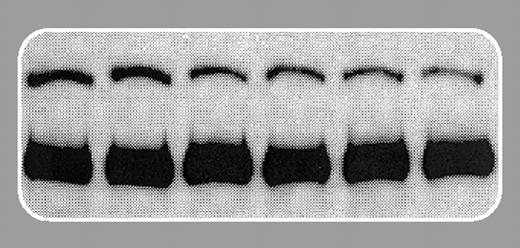The platelet glycoprotein Ib (GPIb) receptor, once thought to have a straight-forward hemostatic function by mediating high-shear–dependent platelet adhesion to von Willebrand factor (VWF), is increasingly recognized as having a potentially diverse range of cellular functions. Over the last few years, an impressive number of potential ligands (VWF, thrombin, factors XI and XII), counter-receptors (Mac-1 [CD11b/CD18], P-selectin), and binding partners (filamin A, 14.3.3) for GPIb have emerged, and functional roles of this receptor now extend to the regulation of the platelet cytoskeleton, coagulation, and potentially inflammation. GPIb also has the capability of transmitting signals linked to integrin αIIbβ3 activation, a fundamental step in the normal hemostatic and thrombotic processes. However, a clear understanding of how this receptor transduces signals has yet to emerge. One possibility, examined by Feng and colleagues in this issue (page 2122), is that the membrane skeletal anchorage of GPIb, as a consequence of its binding to filamin A, is necessary for cytoskeletal signaling events linked to integrin αIIbβ3 activation.FIG1
Feng and colleagues delve deeper into the molecular basis and functional importance of the interaction between the cytoplasmic tail of GPIbα and filamin A. In initial studies, they provide further definition to the specific region in the GPIbα tail that is required for filamin A binding, suggesting that the primary binding site may reside within residues 557-575, a finding consistent with previous observations.1,2 To elucidate the functional consequences of disrupting the GPIb-filamin interaction in intact platelets, Feng et al employed a novel approach using a cell-penetrating peptide incorporating residues 557-575. The peptide specifically inhibited VWF-dependent aggregation and, under pathologic shear conditions, inhibited GPIb association with filamin. Moreover, the reduction in filamin binding to GPIb correlated with the inhibition of shear-dependent tyrosine phosphorylation suggests a role for this interaction in the regulation of GPIb signaling and, potentially, integrin αIIbβ3 activation.
These results are interesting and potentially important and, although they fall short of definitively establishing an essential role for the GPIb-filamin interaction for integrin αIIbβ3 activation, they nonetheless provide additional evidence that this interaction is likely to play a fundamental role in regulating the adhesive and signaling function of GPIb. These studies are timely as the recent development of transgenic mouse models expressing mutant forms of GPIb, combined with an improved understanding of the molecular basis for the GPIb-filamin interaction, sets the scene for more definitive studies on the importance of this interaction for normal platelet physiology. Perhaps some clarity to this long-standing vexing issue of platelet function will soon be realized.


